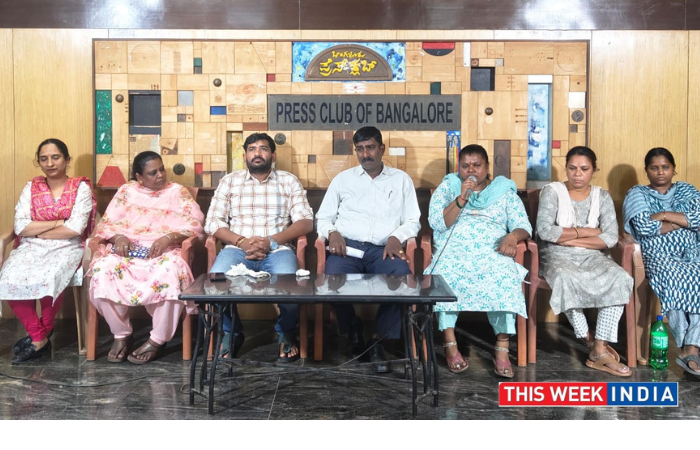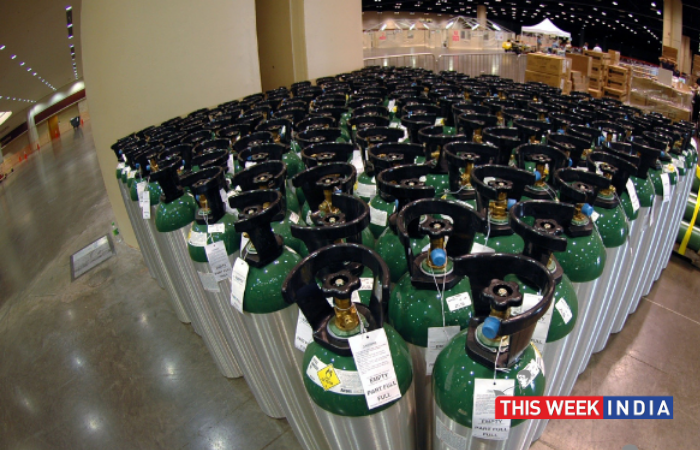Bengaluru, 16th June 2021 : India’s credit ecosystem remains resilient despite the pandemic, as revealed in the latest joint report,
The report “A Review of India’s Credit Ecosystem” highlights several key trends in the lending sector, notably, a key trend where India’s consumer credit market is projected to grow at a higher rate than most major economies globally. This will be driven by a shift in India’s demography, a burgeoning affluent middle class ramping up private consumption, as well as growth in rural populations, all catalysed by technology. Recognising gaps in the market for the unbanked and underserved populations, the report explores how NBFCs and fintechs have transformed the lending landscape to cater to the financial needs of these consumers. The report also highlights the regulatory environment supporting India’s credit ecosystem throughout the pandemic.
The report’s data, which tracks India’s credit ecosystem from March 2017 to February 2021, highlights a V-shaped recovery across Indian markets, with a gradual and steady improvement in sourcing trends. New sourcing crossed the pre-COVID-19 level in October 2020; however, sourcing volumes declined from January 2021 onwards due to the second COVID-19 wave and lockdowns being imposed.
A remarkable recovery was observed across all unsecured credit products. Recovery of personal loans has been high in both low (<Rs 1 Lakh) and high (>Rs 5 Lakh) ticket size segments while the recovery in higher ticket size loans is also improving steadily. The credit portfolio has been resilient, in February 2021, growth stood at eight per cent year-on-year for the portfolio of key products, lower than the 13 per cent observed for March 2020. The pace of growth slowed down for all products, however, with unsecured products experiencing a faster year-on-year growth rate compared to secured loans.
Mr. Neeraj Dhawan, Managing Director of Experian India, says: “The behavioural shift in Indian population has been tremendous just over the last five years. Consumerism has been growing in the previously untapped semi-urban and rural regions as millennials become the main driving force of the mass market. Technological adaption is steep which has, in turn, created acceptance for new financial tools. The biggest beneficiary of this change is the credit market, which is evolving into a self-generating and self-sustaining one. In line with this trend, the risk appetite of traditionally conservative lenders is growing as the horizon of creditworthiness expands. With its array of innovative solutions that help businesses in credit evaluation, smarter lending decisions and safeguarding themselves and their customers from fraud, Experian is at the forefront and one of the main enablers of this shift.”
Mr. Deepak Bagla, Managing Director & CEO, Invest India, adds: “India is making giant strides in financial inclusion. The rise in the affluent middle class and growth in the rural economy is changing consumer spending patterns and driving the bulk of India’s consumption growth. Additionally, rapid technological advancements have further expedited the growth of the credit lending ecosystem. The report attempts to bring forward credible and practical information about the credit industry in these unprecedented times. This report which illustrates Experian and Invest India’s shared commitment to advancing excellence in India’s credit system.”
Mr. Saurabh Mishra, Joint Secretary, Department of Financial Services, and Mr. Rajendra Ratnoo, Joint Secretary, Department for Promotion of Industry & Internal Trade, joined Mr. Deepak Bagla at the launch of the report.
Key highlights of the report:
Demand for credit-fuelled consumption:
With India’s financial industry evolving at an unprecedented rate, demand for credit in the country has also seen consistent growth over the years. The rise in the ‘affluent middle class’ and growth in the rural economy is changing consumer spending patterns and driving the bulk of India’s consumption growth. India’s domestic credit growth has averaged 15.1 per cent from March 2000 to March 2021, primarily driven by retail loans and increasing penetration of credit cards. The Indian consumer credit market continues to expand at a rate higher than most other major economies globally with 22 million Indian consumers applying for new credits every month.
Increase in the purchasing power of an average Indian:
India’s consumption expenditure is more than double of that in countries like Brazil. The private final consumption expenditure has been consistently rising over the past five years and has reached INR 123.1 Mn (USD 1.70 Mn) in 2020. India’s household debt has grown at an annualised rate of over 13 percent in the last five years.
A shift in the demographic profile of the consumer:
India is one of the world’s youngest nations adding more working-age citizens every day. The new generation comprising of millennials and Gen-Z have better access to education, employment, and better incomes, leading them to break away from frugality and increased consumer spending. Along with the rise in income levels, consumers are spending on aspirational categories like lifestyle products, consumer durables, and jewellery. With India’s rising affluence, domestic consumption in the last decade has also increased 3.5 times from INR 31 Tn (USD 0.42 Tn) to INR 110 Tn (USD 1.50 Tn).
Changing customer landscape – the rising role of fintech:
The most rapidly growing industry serving both consumers and businesses is fintech, who can be heralded as an innovation of the decade. When India’s financial services industry was once dominated by banks, fintechs created their own niche space by targeting customers from urban and rural regions who were rejected by banks due to lack of credit history or collateral. While introduce new innovative products, the fintech industry has also brought in the concept of ‘sachet packaging’ for easy access to financial products – available anytime, anywhere, and in any quantity. With rising customer expectations, the advent of e-commerce, and smartphone penetration, the Indian fintech ecosystem has grown manifold in the last few years.
Growth Trends:
1. Unsecured Products have seen an increase in loan books at a CAGR of 38 per cent vis-a-vis Secured Products, which grew at a CAGR of 17 per cent from 2017 to 2020.
2. With the increase in consumerism and financial institutions, the new sanctioned loans have surged between FY18 and FY20 at a cumulative growth rate of 39 per cent. Unsecured loans, being the major contributor, grew with an impressive CAGR of 49 per cent.
3. There has been in an increase in expansion of credit to tier 3 and 4 markets for lending. These markets have witnessed a sharp rise in low-ticket high-volume lending products like two-wheelers, entry-level cars, and affordable housing. Meanwhile, metros remain the biggest lending markets given the skew of the working population.
4. The Indian economy has bounced back faster than expected in the second quarter of 2020 to 21 with a contraction of 7.5 per cent. A V-shaped recovery began after April 2020 and the current financial year is expected to be one of high economic growth.
5. Legacy banking systems are paving the way for new-age lending systems driven by technology that will offer customised financial products and services to the masses.
6. The rise in incomes in rural India has led to growing demand within the micro insurance sector.









